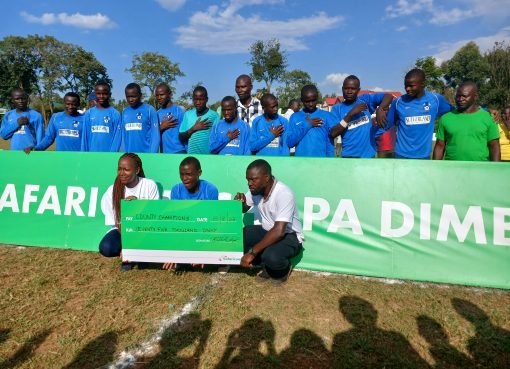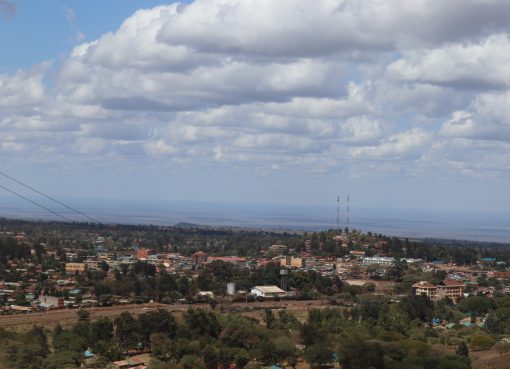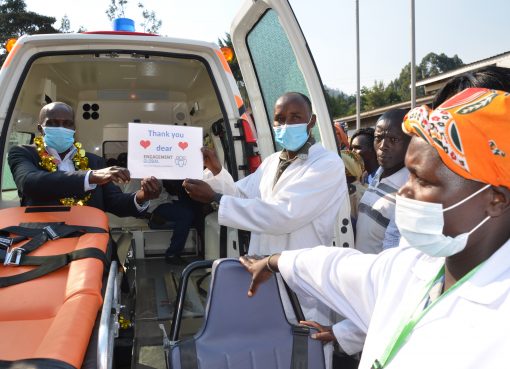Kiambu High court has acquitted a man who had been charged with murder on grounds that the case was poorly investigated.
Lady Justice Christine Meoli while releasing Wilfred Njoroge Gachie faulted the investigating officer for failing to bond important witnesses who would have helped to unravel the murder of Samuel Njenga Macharia, whose body was discovered in the morning after he left a bar in Githunguri.
The judge noted that the key piece of evidence tending to connect the accused with the offence was circumstantial evidence in which he attempted to collect a phone which lay by the deceased’s body and that was when he was arrested on suspicion that he had murdered the complainant.
The accused had been charged that on the night of 27th April 2018 at Marige Shopping Centre in Githunguri Sub-County within Kiambu County he murdered the complainant. He pleaded not guilty and the prosecution produced 8 witnesses to buttress their case which was heard until when the court concluded that the accused had no case to answer.
“This court is of the view that evidence tendered by the prosecution does not rise up to prima facie standard and thereby cannot justify placing the accused person to his defence” said the judge.
In the circumstances, this court acquits the accused person at this stage under section 306 (1) of the criminal procedure code. He is to be set at liberty forthwith unless otherwise lawfully held said Justice Meoli.
Facts of the case are that the deceased aka Mwalimu a resident of Kiambururu had been on the evening of 27 April 2018 been drinking beer from 3 p.m., he requested a bar attendant at the pub “Madam I bub” one Emily Achieng who testified as Pw2 to hail a motor cycle commonly known as boda boda to take him home.
The court heard that PW2 rang up a local operator John Mwiruri who testified as PW4. The duo stated that by the time the latter arrived, the deceased was not at the bar.PW2 said that PW4 told her that the deceased left with alternative transport with some “men from Thuita” including one Fred.
On his part, PW4 told court it was PW2 who informed him this when he arrived at the bar and that he subsequently took on a different customer. While PW4 claimed that the accused had been at the pub on the material date, PW2 made no such mention and the deceased never reached his home anyway.
On the next day PW1, the area chief at the time Joseph Njuguna Kago was called at dawn break to a scene close to Marige trading centre where the body of the deceased lay in a culvert by the roadside.
PW1 testified that he found other people at the scene and that he saw the accused approach, claiming to be in search of his phone and proceeded to collect an ITEL phone (Exh 1) that lay next to the body.
That he was placed under arrest and the phone handed over to CPL John Warui (PW7) who had been dispatched to visit the scene by his supervisor. The body was removed to the mortuary and post mortem examination carried out by Dr. Eunice Mugweru (PW6) on 1st May 2018. Based on her observations, she concluded that death was caused by asphyxia secondary to manual strangulation.
Justice Meoli said according to written submissions, as observed by the defence, the prosecution case rested on circumstantial evidence there being no eye witness to the murder.
The key piece of evidence tending to connect the accused herein with the offence was that on the morning of 28.4.18, he attempted to collect a phone which lay by the deceased’s body and that PW1 got him arrested. PW1 admitted that this piece of crucial information was missing from his statement to police and that, the accused had a bad reputation in the locality.
She further noted that it was difficult to believe that PW1 could have failed to record such an important piece of information in his statement to police, or that the accused would have been so foolhardy as to attempt to do what PW1 claimed he did in broad daylight where a crowd of people gathered at the scene to have a glimpse of the body. This piece of evidence sounds incredible.
Based on the witnesses lined up by the prosecution, PW2 was the last person to see the deceased alive, at the pub. While admitting that she had called PW4 at the deceased’s request, to take the deceased home, her evidence was not direct as to the circumstances in which the deceased left the bar. She claimed that PW4 informed her that the deceased left in the company of one “Fred” and other “men from Thuita”. Evidently, she did not witness the deceased’s departure from the bar or did not want to testify about it.
“As regards PW4, he said that PW2 told him the deceased had used alternative transport to leave the bar. So, who was the motor cyclist called “Fred” who, according to PW2 drove the deceased home on the material night? We do not know. I agree with submissions by the defence that the said “Fred” ought to have been treated as a person of interest to the investigations” said the Judge.
The investigation officer (PW7) admitted that he did not trace or question the said person. And though PW2 stated in her evidence the she knew one Fred and that PW4 said the Fred had left with the deceased, Fred remains a mystery. At the same time, PW7’s assertion that the deceased left the bar in the company of the Accused was not confirmed through direct evidence by any persons present at the bar on the material night, including PW2 and PW4.
Moreover, unlike PW4 who stated that the Accused was in the bar on the material night, PW2 did not mention such presence in her evidence. Yet as the bar attendant, she stood a better chance of seeing the bar patrons present on that night than PW4, who on all accounts did not actually enter the bar on that night, or spend any time in the said premises, his expressed sole business to collect and ferry passengers from the bar to other destinations.
On the evidence before the court, there were three crucial witnesses who could have shed light on the circumstances in which deceased left the bar and his companions on the material night, and ultimately what happened to him. These are PW2, PW4 and the alleged Fred. It is my considered view that PW2 and PW4 clearly knew more that they cared to admit, about the events of the material night. The investigating officer allowed them to get away with superficial and evasive statements which were of little use to this case.
The investigator did not bother to uncover the identity of the alleged Fred, the motor cyclist or the other “Thuita men” who allegedly accompanied the deceased as he left the bar. In short, the case was poorly investigated. The resultant evidence cannot pass muster the test set out in the quintessential case of Ramanlal Trambaklal Bhatt v R 1957) EA 332, she summed up the case as the accused breathed a sigh of relief.
He was represented by Maxwell Njehu
By Lydia Shiloya





